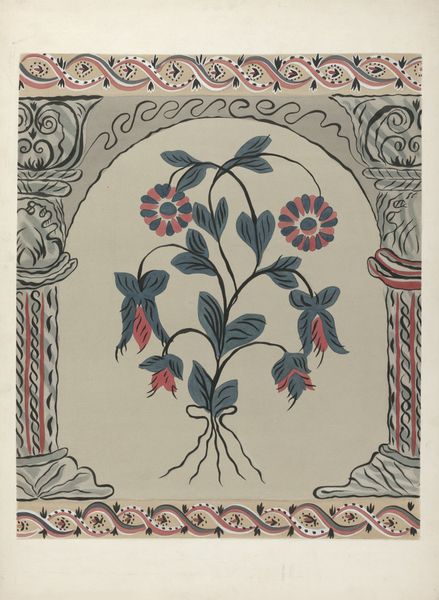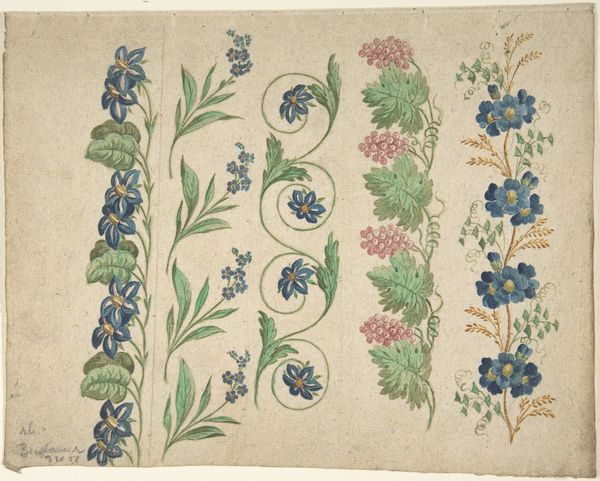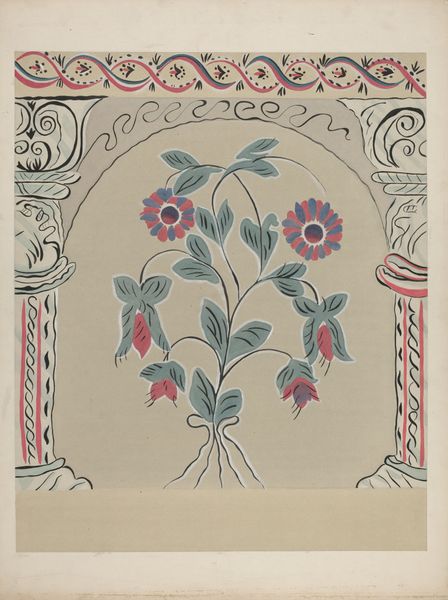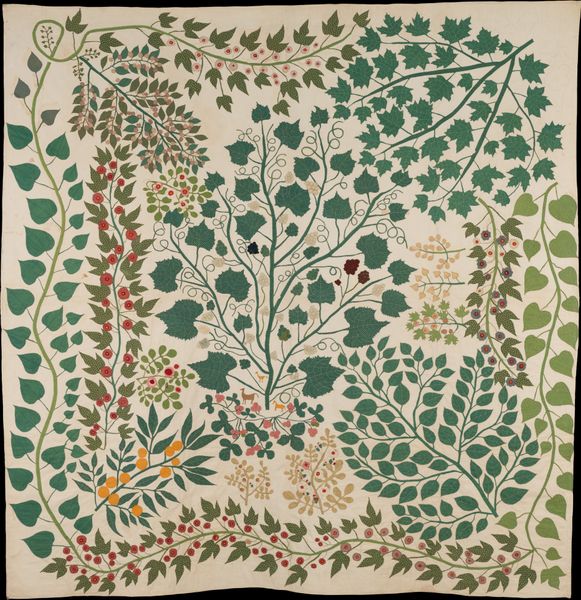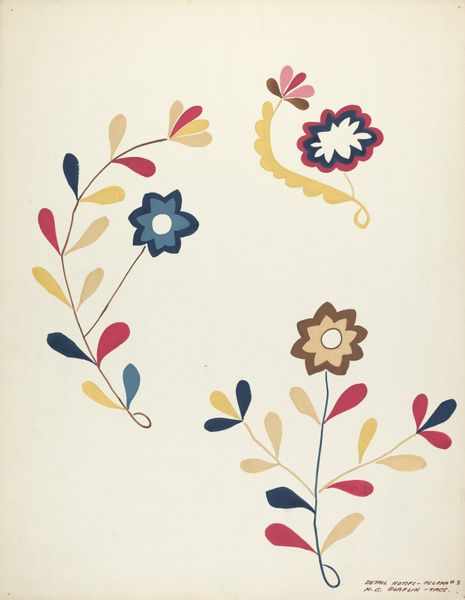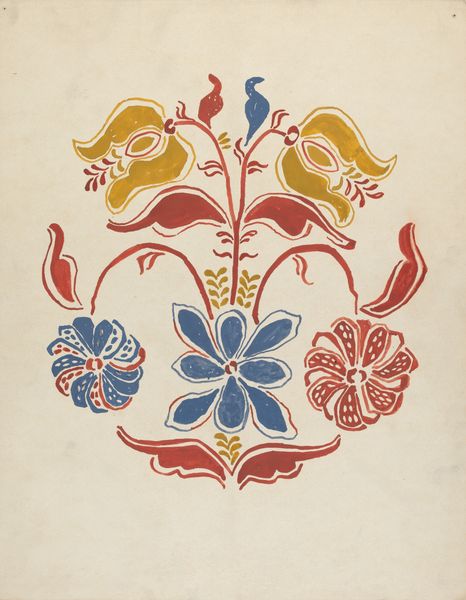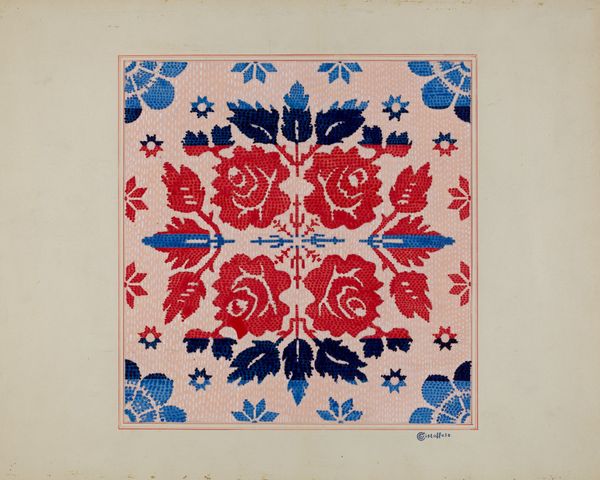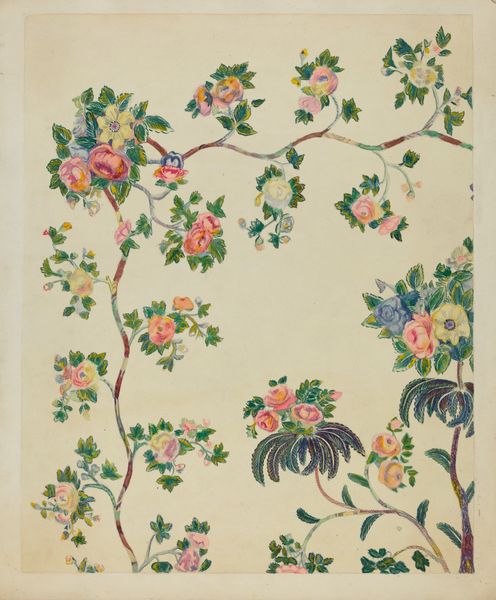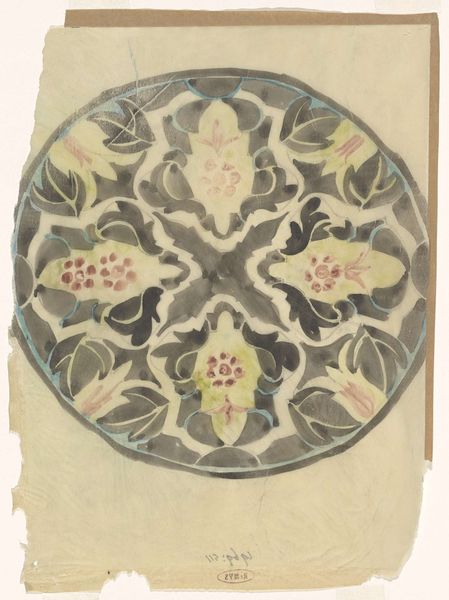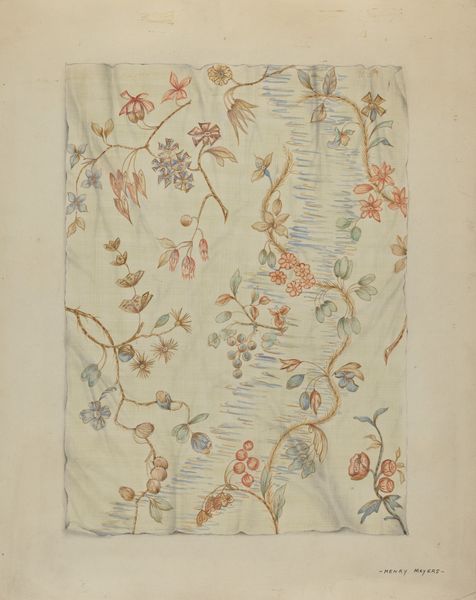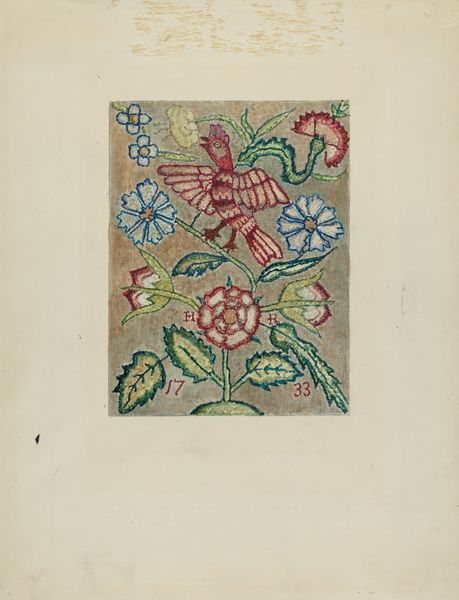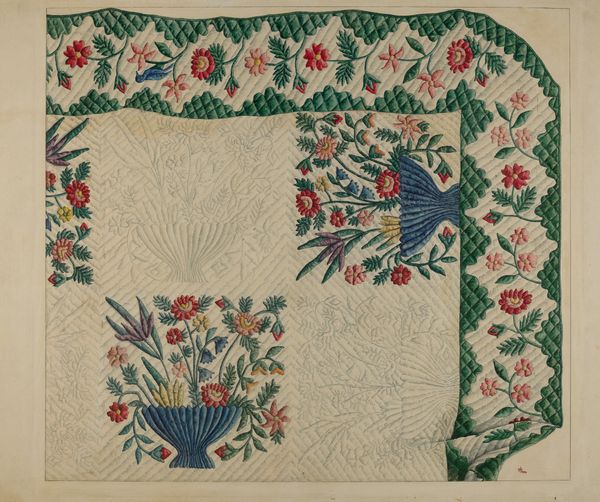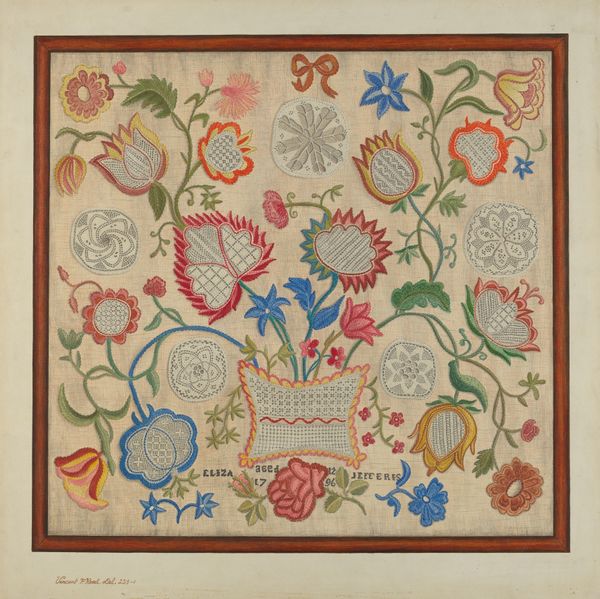
drawing, ornament, print
#
drawing
#
ornament
#
organic
#
pottery
# print
#
arts-&-crafts-movement
#
pattern
#
pattern background
#
tile art
#
organic pattern
#
pattern repetition
#
decorative-art
Dimensions: sheet: 15 15/16 x 11 in. (40.5 x 27.9 cm)
Copyright: Public Domain
Editor: This is "Design for a Floral Pattern," created by Christopher Dresser between 1878 and 1888. It looks like it could be a drawing or print. It’s really intricate. I'm struck by the sort of restrained color palette—lots of blues, greens, and browns. What catches your eye when you look at it? Curator: The orchestration of form here is particularly compelling. Notice how the pattern unfolds, almost as if adhering to a latent geometrical structure. The floral elements aren't just scattered; they're calibrated. There’s a visual rhythm at play. Do you see how the arrangement utilizes a play between symmetry and asymmetry to create a balanced whole? Editor: Yes, I see what you mean about the symmetry now. I initially saw it as random, but the repeating curves give it this internal sense of order. It reminds me of fractals, where you see repeating patterns on different scales. Is this something characteristic of Dresser's designs? Curator: Indeed. This structured naturalism defines much of his aesthetic, aligning him with key tenets of the Arts and Crafts movement. This work also reflects Dresser’s deeper engagement with botanical principles, showcasing the inherent mathematical harmony of the natural world. Look at the deliberate choices in coloration; how they articulate form and enhance this internal geometry. How do these elements combine to give this image its impact? Editor: The limited color palette really focuses attention on the shapes themselves. Without strong colors vying for attention, the graceful lines and their relationships become the focus. The visual rhythm really brings a sense of unity. Thanks, that gives me a different perspective than I had initially! Curator: It’s a fruitful reminder that seemingly simple designs often conceal layers of sophisticated construction and deliberate calculation. A pattern, after all, is only as compelling as its underlying architecture.
Comments
No comments
Be the first to comment and join the conversation on the ultimate creative platform.
